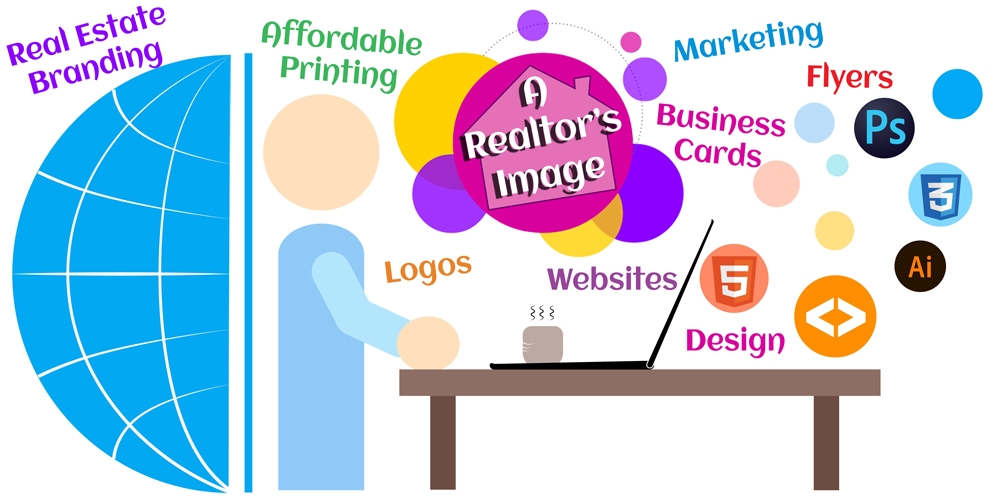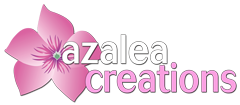Does Your Customer Know Who You Are As A Realtor?
How Are They Going To Choose You Over The 8,000 Other Agents?

We Can Help You With That!
Click Here For Our Affordable Rates
We Love What We Do!
We Are The Agent Advocate For Realtors
We want to help realtors, new or seasoned,
become as successful as possible!
xx
Contact us for more information!
The consultation is FREE!
Info@AzaleaCreations.com | 843-303-2300
Standing Out In The Real Estate Crowd!
First, define what makes you different from your competitors.
Second, create a personal branding tagline or slogan built around that point of differentiation.
Once you do those two critical things, get to work creating all the elements on this checklist that support your brand. As you assemble these items, take special care to stay true to your unique branding approach. Everything you do should represent you and your business. Purpose, significance, and consistency are essential to a successful personal brand. Once you gather all the checklist items below, you will have created a virtual branding library to help market yourself on any platform, free or paid, and for any purpose.
Mission statement: Defining your mission as a real estate agent sets the foundation for your goals and direction. It’s really more for you than your customers.
Elevator pitch: This is the 10-second statement that cuts right to the chase of who you are and what sets you apart from all other real estate professionals. Make sure to include exactly who you help, how you help them, and what that help allows them to accomplish.
Biography: Your bio should be no more than 500 words and should begin with a statement or question to grab your prospect’s attention. Disarming statements that are more personal in nature work well and leave the reader wanting more.
Signature sound bites: These are a series of bullet points that highlight why and how you are qualified for your unique brand. When assembling these, think of your purpose, your ideal customer’s needs, your accomplishments, and other points.
Frequently asked questions: Create at least eight leading questions that will allow you to showcase your brand throughout the answers. Don’t forget to include questions your ideal customers should be asking as well as those you hear often.
PHOTOGRAPHY
It’s always best to hire a professional photographer to take the business photos you will display alongside your branding. As you prepare for your shoot, think about what you’re trying to portray to your ideal customer. Is it confidence? Sincerity? Energy? Think about the outfits and colors that best exude the emotion you’re going for. Here are the six different types of photos you’ll need:
Friendly shots: Think of a warm, welcoming smile that draws everyone to your personality and makes you appear approachable. These will become your head shots.
Relaxed shots: These are most often taken when sitting or leaning on something. They help you appear more laid back. Feel free to use chairs or stools or to lean against a wall.
Fun shots: Consider facial gestures and hand gestures that bring out your goofy, humorous side. Candid shots are great because they catch you off-guard and can provide a window into your personality.
Action shots: Show some photos of you doing what you do every day: showing a home, talking with homeowners, greeting open house customers, handing over the keys to a home.
Full-body shots: Take these standing shots in several different poses, such as leaning on one hip, an elbow up as if leaning on a yard sign, arms folded, and other situations.
Display shots: Stage some poses for promotional use. Pose with an actual sign or book in your hand. One trick is to shoot with a blank white canvas in the background and have your graphic designer superimpose an image on top of that.
BACKGROUND IMAGES AND ELEMENTS
The images and elements that appear alongside your marketing materials add to the overall look and feel of your brand and bring it full circle.
Logo: People who are serious about their unique brand often have a logo to further differentiate them from competitors.
Home exterior image: Choose the exterior of a home that you want people to associate with you or the area in which you live.
Home interior image: Choose one or two images of interior rooms that you feel best represent the type of home your ideal customer is seeking.
Landmark or geography image: Choose an image that represents the market you live in, such as a famous landmark or geographic backdrop, perhaps mountains or a lake.
Brand connector image: When applicable, choose an image that instinctively portrays what your brand is about. For instance, if you’re known for helping people transition from one home or lifestyle to another, one symbol of transition might be an image of a bridge.
CONTENT
The main purpose of a strong personal brand is to position you as the authority in your chosen niche. The best way to accomplish this is to share your expertise through various means of communication. Have at least one signature piece of content that demonstrates your expertise and supports the foundation of your brand. Here are a few suggestions for compelling content that you can create in the form of an e-book, video, podcast, article, slide presentation, or webinar.
Brand-specific advice: This is the most common type of expert content, and it demonstrates specific advice that sets your unique brand apart. An example could be: The Senior Living Guide—10 Steps for a Smooth Transition Into Your New Home.
Misconceptions about your market: Use this to stand apart as an expert who can help your customers understand the real story behind the myths.
Entertainment guides: Providing a fun family resource that is helpful to your customers and demonstrates what you love about your area is a great way to showcase your personality and ties to your community.
Workshops or courses: When it comes to teaching people what they should know about real estate, nothing sets you apart like being the instructor. Create a curriculum that is designed specifically for your ideal customer and deliver it in person or online, live or recorded.


